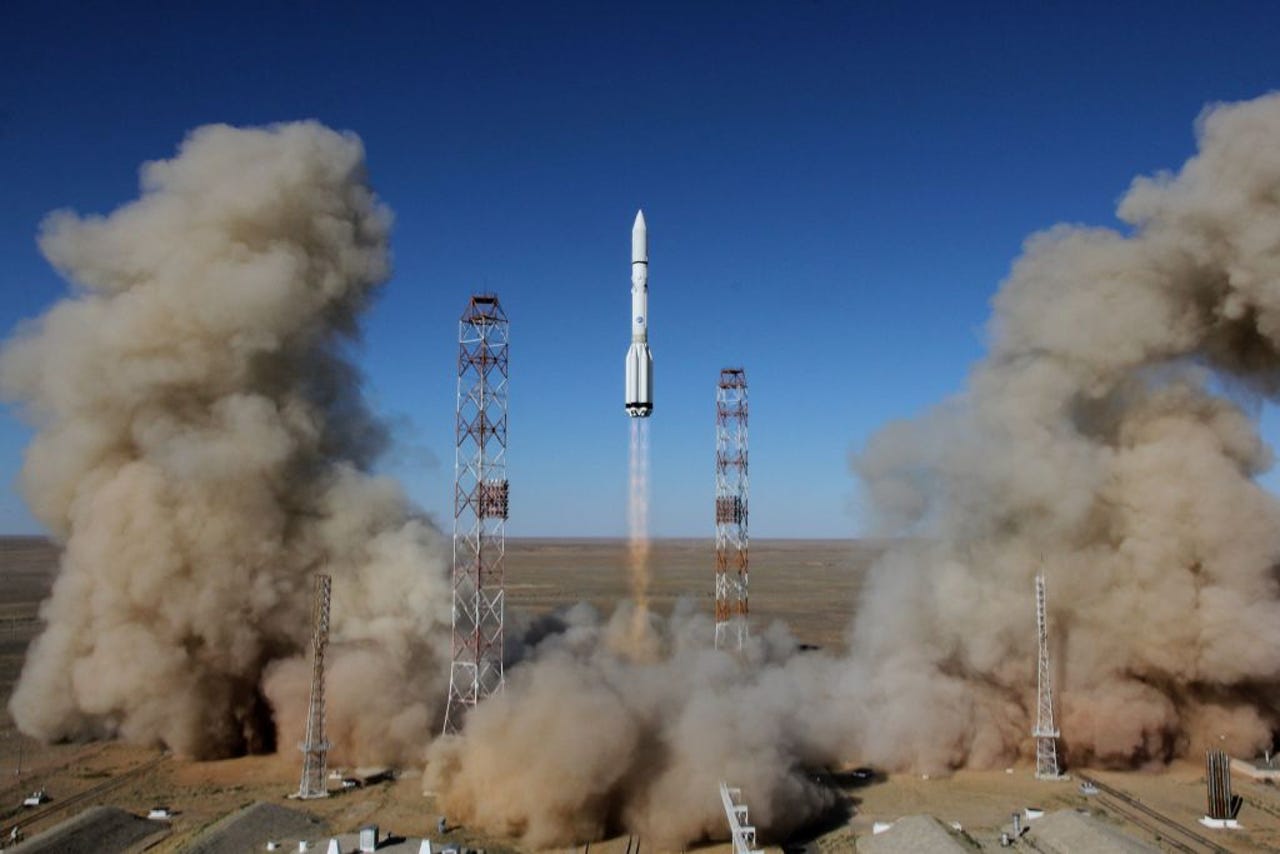Inmarsat Orchestra 'dynamic mesh' network to use 5G, low orbit, and geostationary satellites


A Russian Proton-M rocket carrying the British communications satellite Inmarsat-5 F3 blasts off from a launch pad at the Russian leased Baikonur cosmodrome on August 28, 2015.
Satellite connectivity company Inmarsat has taken the wraps off a network it claims will be able to combine 5G, low orbit, and geostationary satellites.
Dubbed Orchestra, the company said it would need to invest in the order of $100 million over five years to get the network off the ground, as well as launch a constellation of 150-175 low-Earth orbit satellites. Work will begin on the terrestrial network.
"Inmarsat's existing GEO satellites -- both GX and L-band -- will continue to provide global coverage, high performance, security and resilience. Terrestrial 5G adds ultra-high capacity in busy 'hot spots', such as ports, airports, and sea canals," the company said.
"A small constellation of LEO satellites will layer additional high capacity over further high-demand areas such as oceanic flight corridors."
See also: Best satellite phone and communication gadgets in 2021
Customers will be able to mesh the connectivity between their terminals, with the example put forward being a ship connected to a 5G tower forwarding capacity to other vessels "beyond terrestrial reach".
"By combining the distinct qualities of GEO, LEO and 5G into a single network, we will deliver a service that is far greater than the sum of its parts," Inmarsat CEO Rajeev Suri said.
The company said new services used by the network could include close-shore navigation for autonomous vessels, emergency safety services for maritime crews, secure and tactical private networks for governments, and direct-to-cloud connections for airlines.